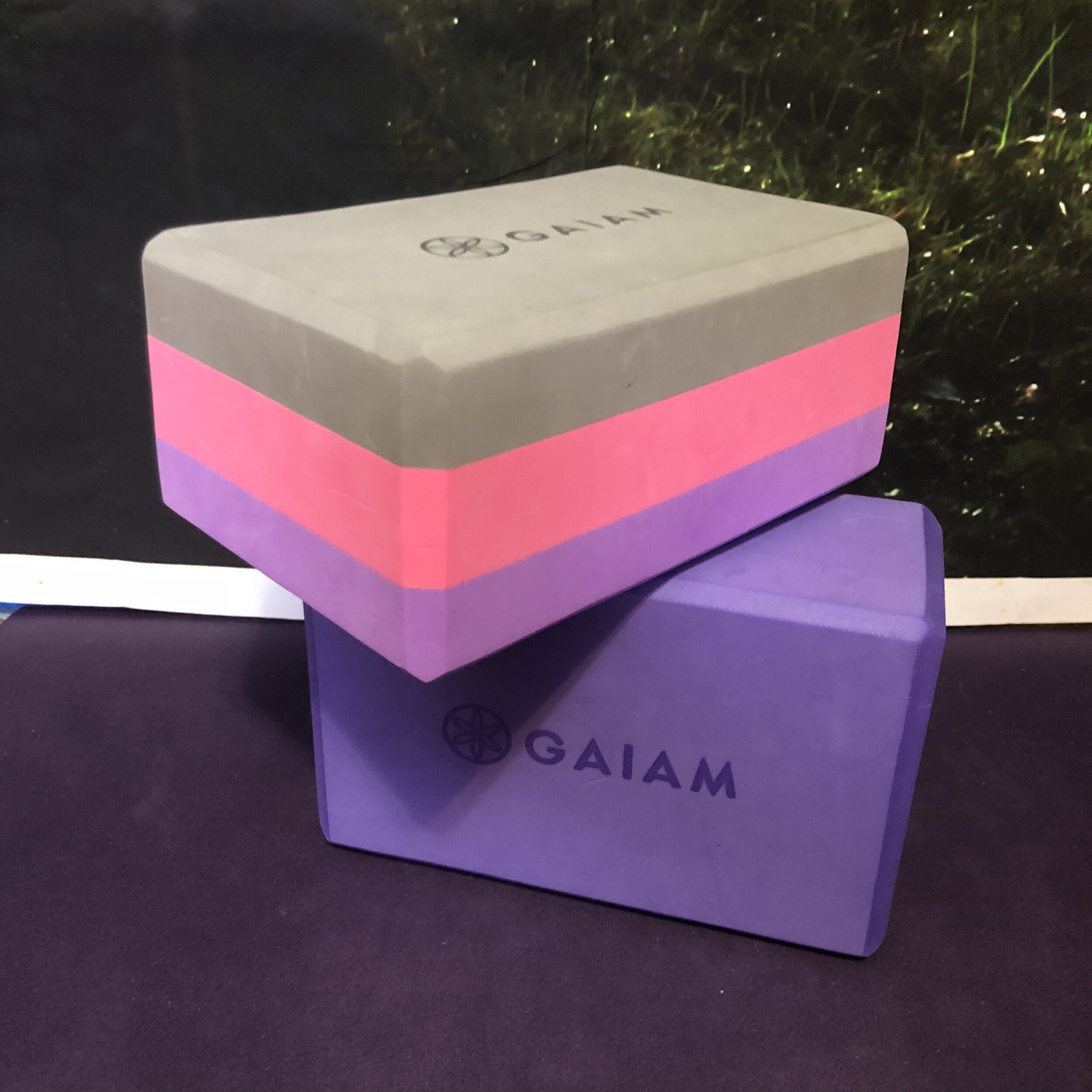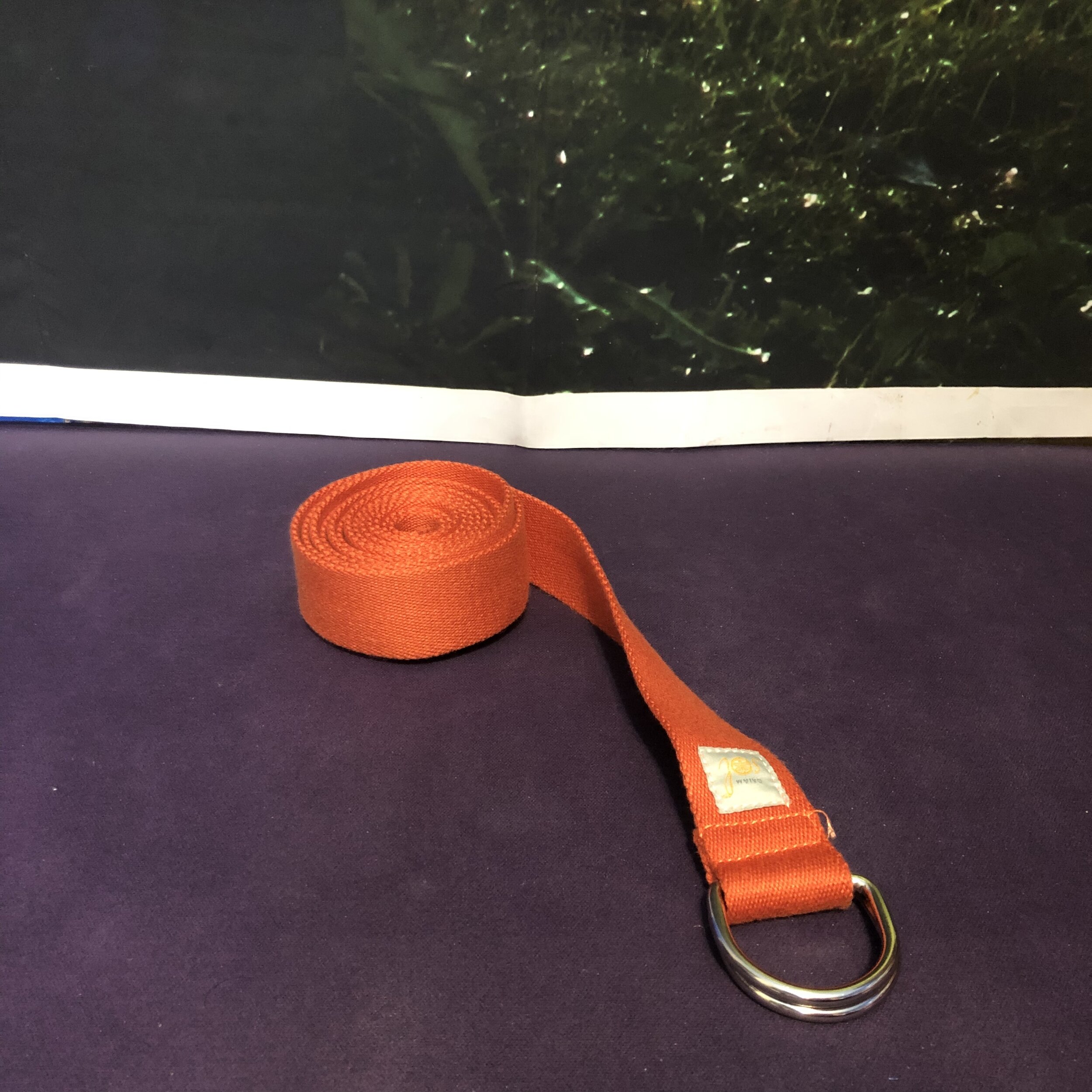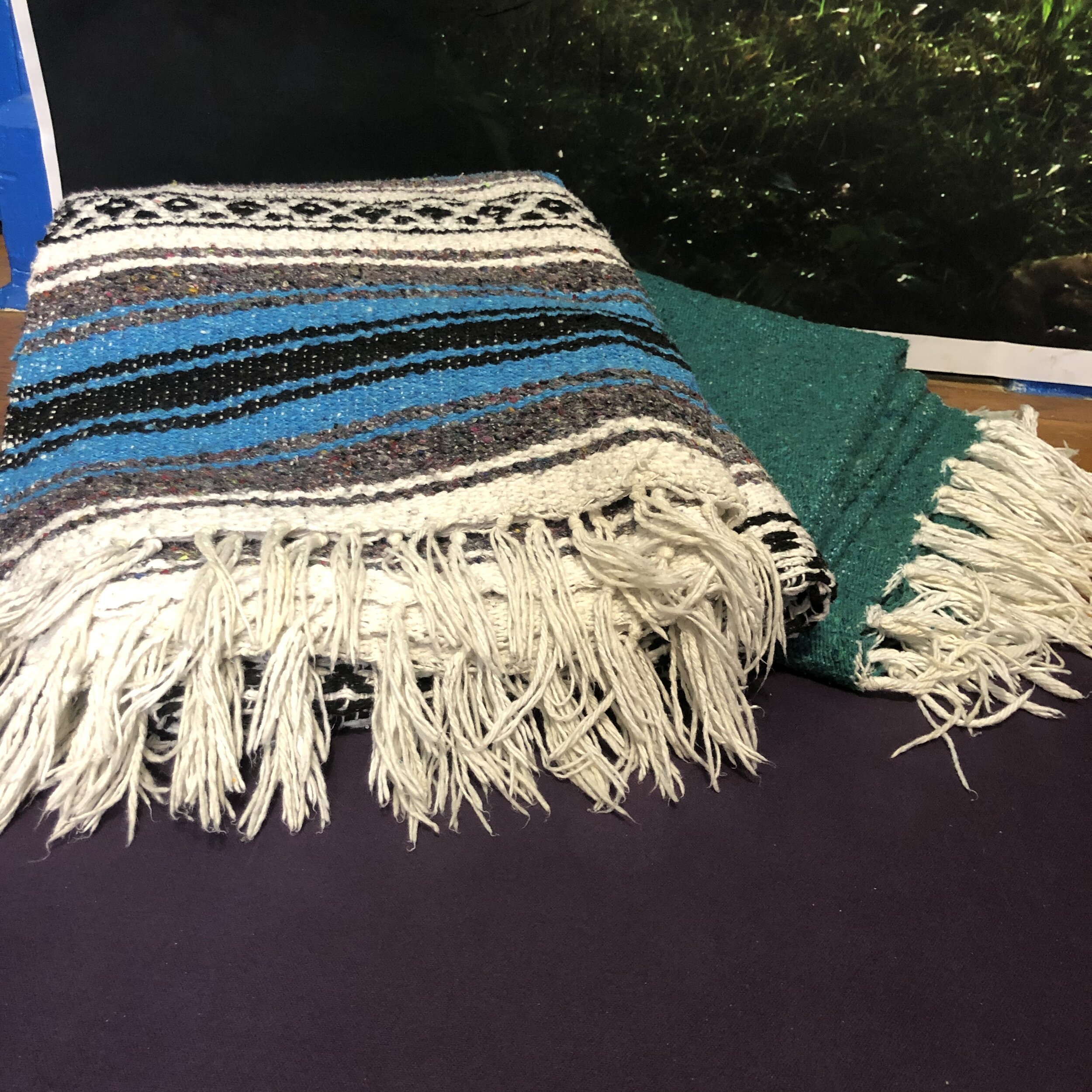When I first started getting interested in yoga, I had assumed that the only thing I needed in order to practice was a yoga mat. Imagine my surprise when I realized that there are lots of props out there! And while it all looked interesting, I didn’t have unlimited funds—I still don’t!—and I wasn’t sure which props were essential.
Yoga props are tools that can help us in a number of ways: they can make yoga poses more accessible by bringing the floor up to us, or provide us with more comfort. And while almost all props are a worthy investment, there are also many items in your house that would make worthy replacements, such as a belt or a scarf in place of a yoga strap.
Ultimately, whether or not you should invest in yoga props really depends on your own individual needs. Fortunately, I’ve done some of the hard work for you by compiling a list of the most basic yoga props out there, as well as what these props are often used for—and whether or not I think it’s worth spending the money on.








A Yoga Mat
If you’re going to buy any tools for your yoga practice, I’d say a yoga mat is the only one you absolutely must buy. Okay, so you can still do yoga without a yoga mat, but there’s something to be said about the comfort of having your own little rectangle of real estate. Plus, if you don’t have the right kind of surface beneath your hands and feet, you run the risk of sliding around on the floor (and for those who’ve never experienced it, let me tell you—there’s nothing more awkward than a slippery downward-facing dog!).
Curiously enough, yoga mats can actually be quite pricey. But if you’re just starting out, then there’s no need to spend more than $20, if that. I’m a fan of this one from Gaiam because it’s simple, inexpensive, and just “sticky” enough that your fingers and toes can easily find traction.
Block
Yoga blocks look like colorful bricks, and are made in a number of different materials, including foam, wood, and cork. Despite their boxy shape, yoga blocks are surprisingly versatile—you can place them on the floor so that you have a place to rest your hands in standing forward fold, or slide one under your hips for a supported bridge pose, for example.
I think they are definitely worth the investment, and are relatively inexpensive—you can purchase a foam block for as little as $11. I personally own a pair of these blocks from Gaiam.
But if you’re in desperate need for a block-like prop (like, right now), a stack of thick books or another box-shaped object will certainly do the trick.
Strap
As I mentioned earlier, you can easily sub out a yoga strap for a belt or a scarf. But what exactly is a yoga strap used for? And do you really need it?
When I first began practicing yoga, I bought a yoga strap right away, and I am pleased to say that it has been an invaluable tool for me. I, like many people, have tight, inflexible hamstrings, which makes it difficult for me to touch my toes. When I practice seated forward fold, I loop the strap around my feet, which takes the strain of reaching forward off of my arms and torso, while still enabling me to comfortably stretch the backs of my legs.
If you are super flexible, then a yoga strap might not be something you need to buy right now. But if your body is stiff, or you’re still working on building up your flexibility, then the strap might be a perfect tool for you. I really like this one from Gaiam.
Blanket
I believe that a blanket is an essential prop for your yoga practice. That being said, you don’t have to buy a blanket, especially if you have a number of your own favorite blankets at home!
I bought two “yoga blankets” (which area also called Mexican blankets) for my home practice, but I also use a few fleece blankets too, pulled right off of my bed. The yoga blankets are firm, heavy blankets, and are great for rolling up into long tubes to use as support for under the knees or ankles when lying down. But they aren’t nearly as soft as my fleece blankets, which feel nice under my head or for as a covering myself up during savasana, the finally resting pose.
If you feel like the yoga blankets are a must-have, mine are very similar to these. Otherwise, whatever blankets you have on hand will work nicely!
Yoga Towel
Whether or not you need a yoga towel really depends upon the kind of yoga you practice. I personally have never used one, but I also teach and practice Hatha and Restorative yoga, which, though they have their own challenges, aren’t necessarily all that sweaty.
But if you practice Vinyasa yoga, or even hot yoga (which is yoga that is done in a room that is heated up to 90 degrees!), then a towel might be a worthy investment for you. This one from Amazon looks promising.
Bolster
A yoga bolster is like a large, firm pillow, and they come in a few different shapes and sizes, depending on what you intend to use them for. Though not common in Vinyasa, or flow-styles of yoga, bolsters are used often in Yin and Restorative yoga classes, as they are more comfortable to sit or lay on than yoga blocks.
So, should you buy one? It depends.
I resisted buying a yoga bolster for a long time. They can be pricey, and I found that I was able to get by just by stacking my blankets on top of each other, or using large pillows and couch cushions from around the house. But once I started teaching restorative yoga, it became clear that I needed a bolster at home, so that I could better plan my classes (as most yoga studios have at least one type of bolster available for student use).
And while I have found that a bolster is a delightful addition to my arsenal of props, it’s not an essential purchase for everyone, at least not at the beginning. That said, if you’re considering making the investment, I recommend this bolster from Hugger Mugger.
Meditation Cushion
Unless you have a pretty serious meditation practice, then a meditation cushion is probably more of a luxury item. My sister bought me a meditation cushion similar to this one as a Christmas gift last year, and I must say, it has really made sitting down for my daily meditation practice much more comfortable.
But if you are just starting out, sitting down on a folded blanket or a pillow will work just fine.
Eye Pillow
Though I suppose eye pillows are technically “luxury props”, they’re game changers. An eye pillow is a small pillow, usually stuffed with flax seed and lavender buds, that is designed to be laid gently over your eyes while resting in savasana—and oh my goodness, does it feel incredible! The gentle weight of the flax seeds encourages the eyes and facial muscles to relax and soften, and the lavender is so soothing.
They can make savasana feel super relaxing—and can even help soothe the pain of a headache!—and while not technically essential, I strongly recommend you consider making the investment.
I have a “fancy” one from Halfmoon, but you can also purchase one on Amazon for as little as $12. Or if you’re feeling crafty, you can make your own!
Sandbag
Out of all the yoga props I’ve ever mentioned to my yoga students, nothing seems to baffle students more than the sandbag. A sandbag is exactly what it sounds like—a big bag of sand—and yet, it can be a literal life-changer for students.
Like an eye pillow, a sandbag can provide a nice, grounding weight when placed on the body (but please, don’t put a sandbag on your face! That sounds uncomfortable!), but it’s much heavier than an eye pillow, which can help you feel even more grounded. I don’t actually own a sandbag myself (simply because I haven’t invested in one at this time!), but I have used them both on myself and students while at the yoga studio. A sandbag over the hips and belly during savasana, or placing one over the feet while practicing legs up the wall pose, can feel deeply grounding.
When it comes to buying sandbags, you can buy them premade, or you can buy an empty bag and then fill it up with your own sand.
Yoga Wheel
A yoga wheel is not an essential prop. Full disclosure: if it weren’t for my sister (who buys the best yoga-themed gifts, by the way!), I probably wouldn’t have a yoga wheel to begin with. Just looking at the large, round, ring-shaped prop baffled me at first. What was I supposed to do with it?
Well, a few YouTube videos and some experimentation later, and I discovered that the yoga wheel is actually a lot of fun!
I’m a huge fan of back-bending yoga poses, so I love how the yoga wheel can support me as I lay my head, upper back, and shoulders down across it. But it’s also a fun way to stretch the legs, play with balance, and just experiment in your yoga practice.
And while you certainly don’t need to run out and buy a yoga wheel, if you’re curious to see what they look like—and maybe even invest in one, I like this one from Amazon.
Shopping around for yoga props can be a little overwhelming—and expensive. And while some props are definitely worth the investment, others can easily be replaced with whatever you have lying around your house. The way I see it, if the Ancient Yogis of India could get by with minimal props, then so can we!